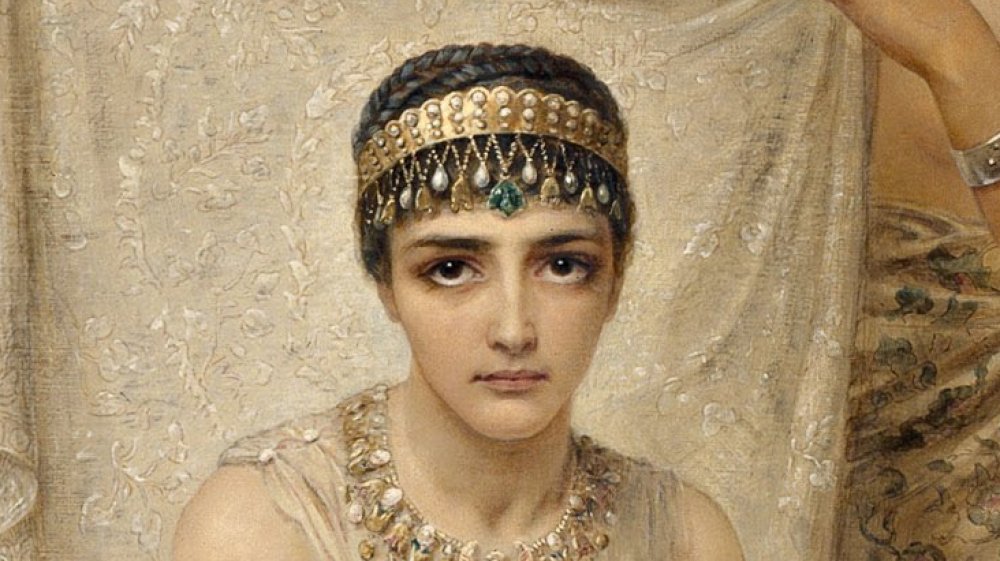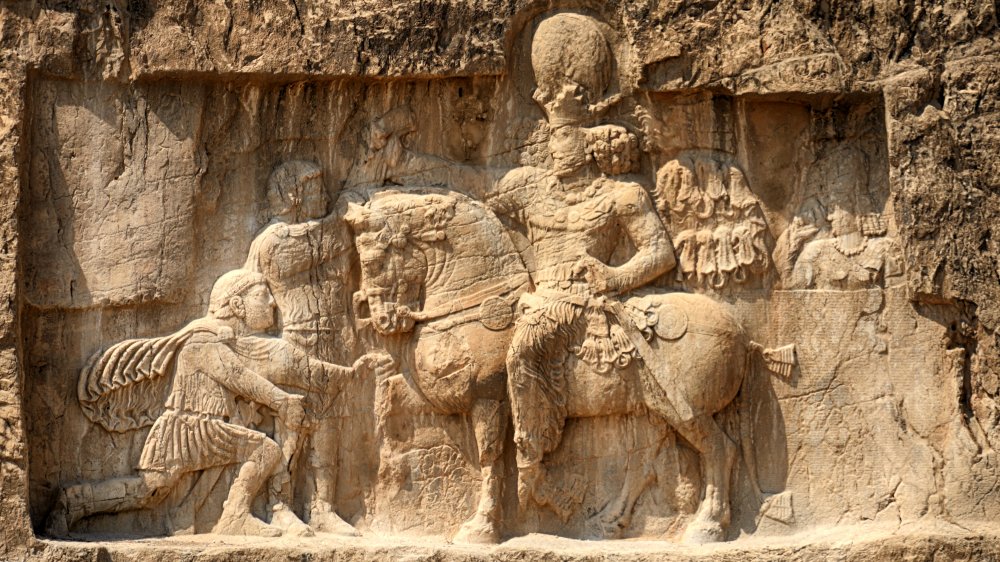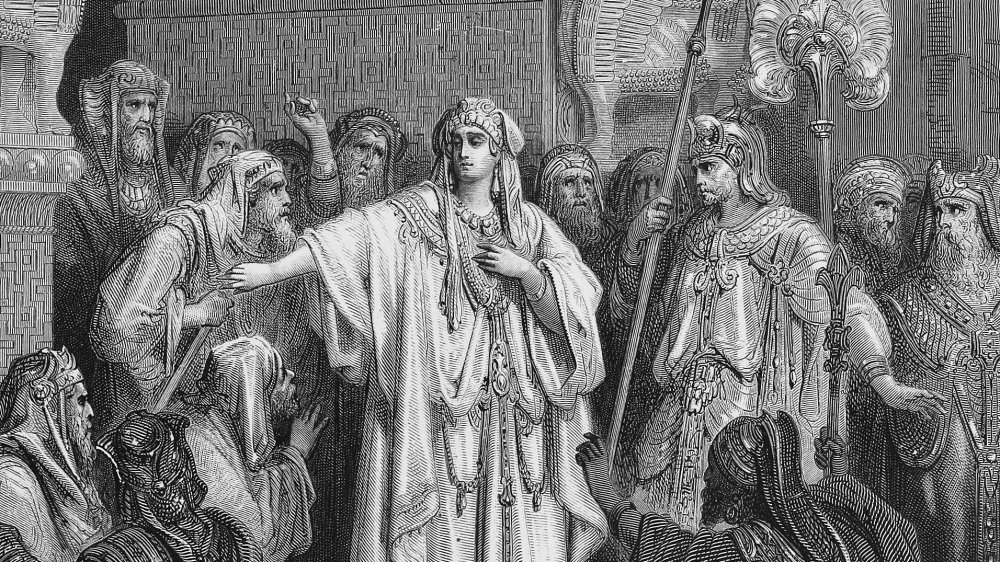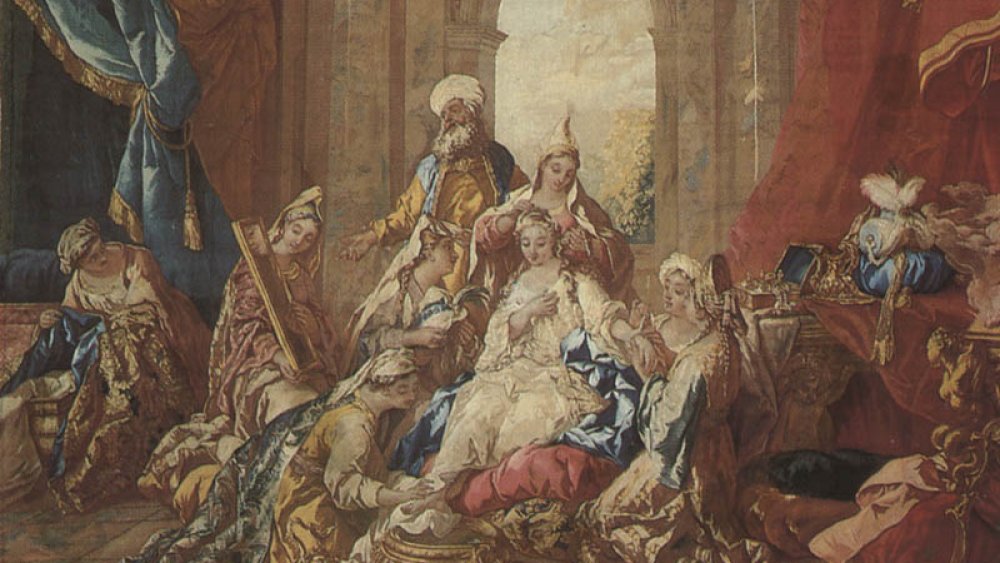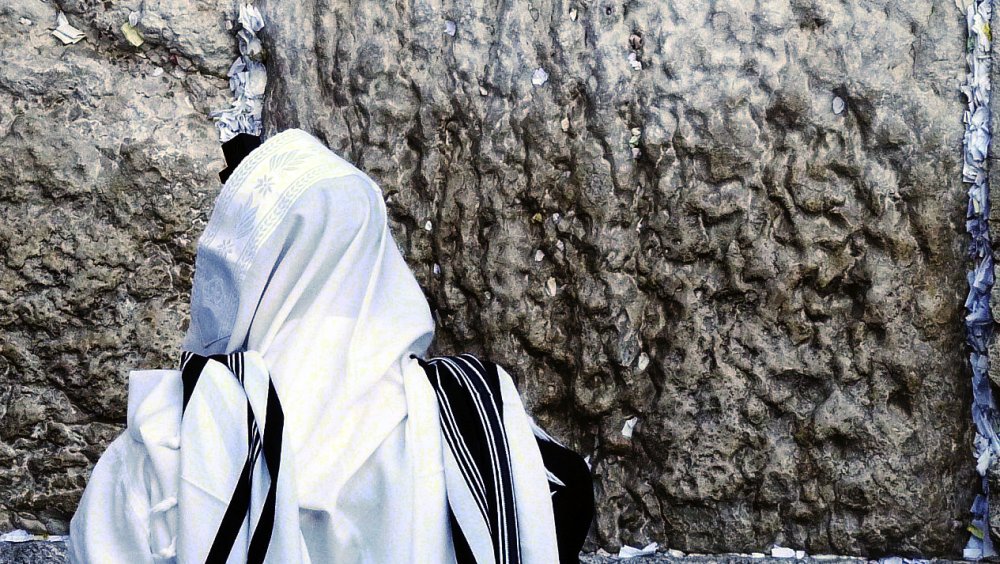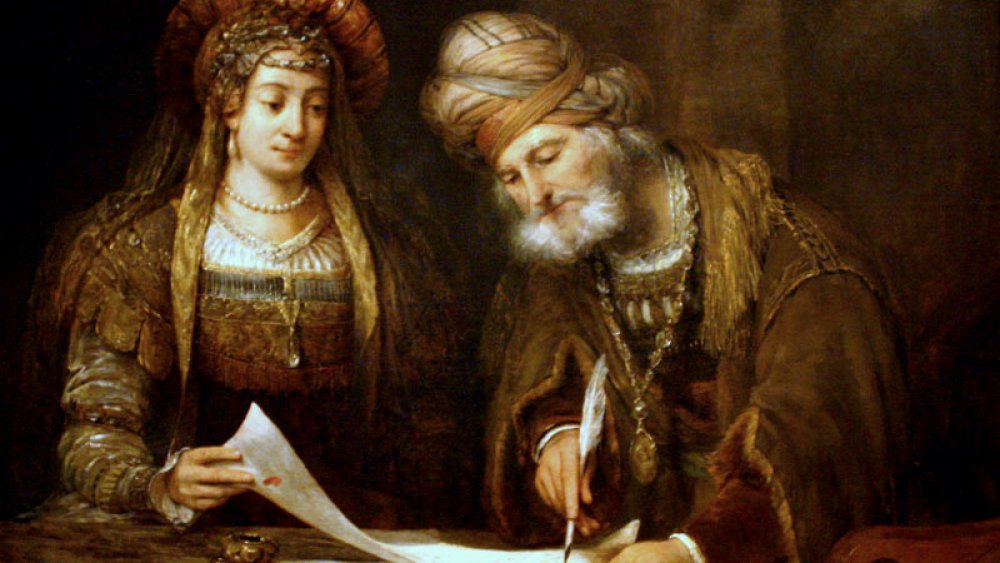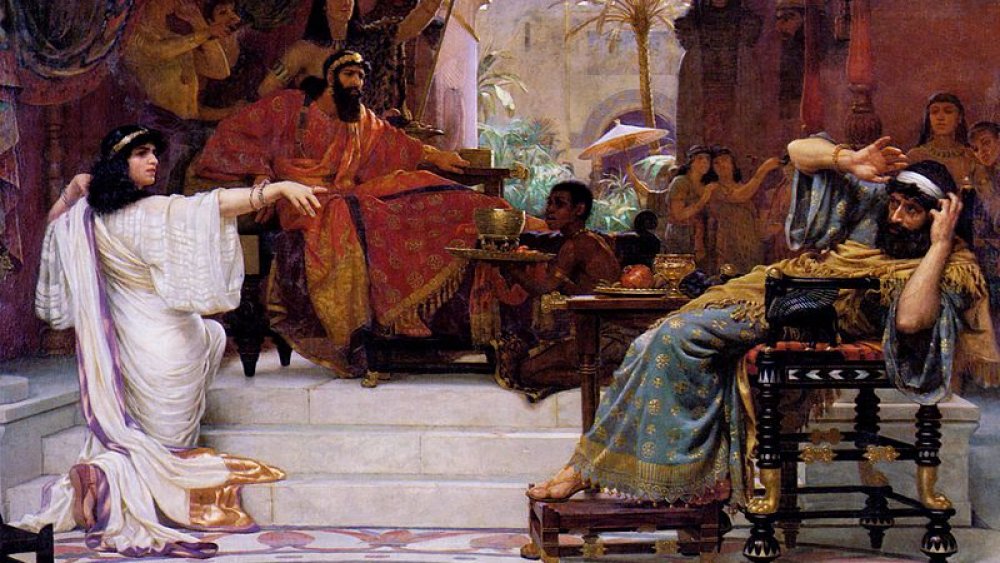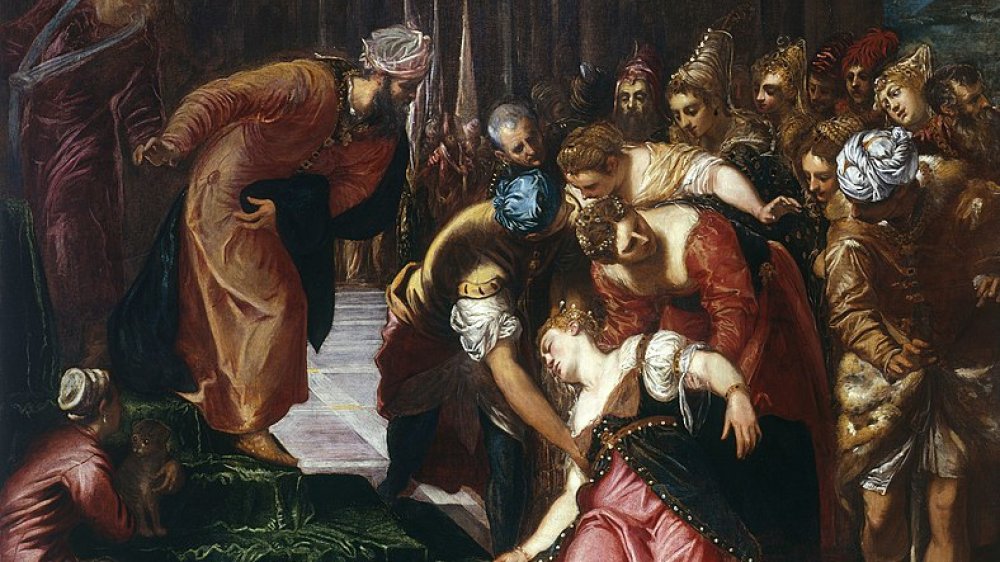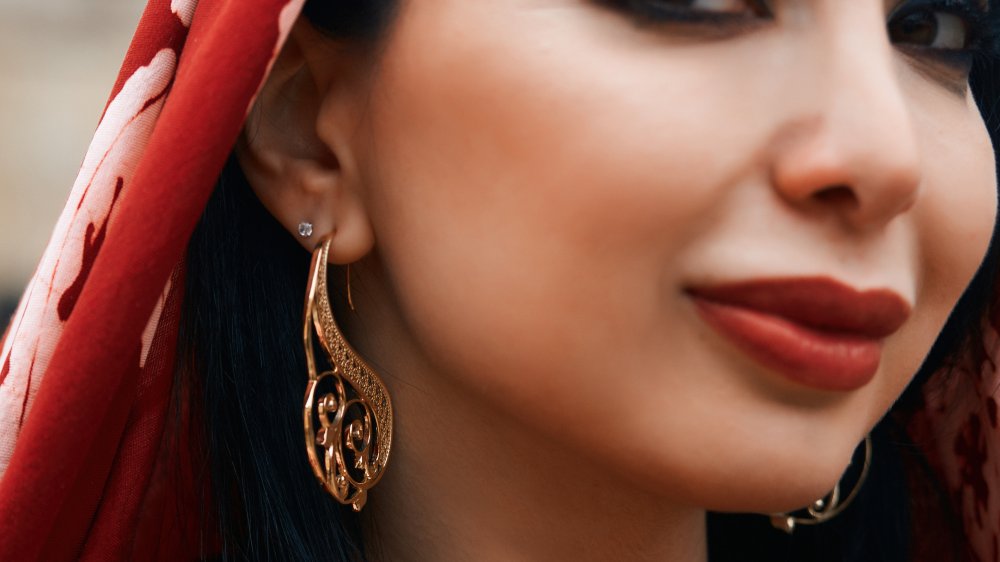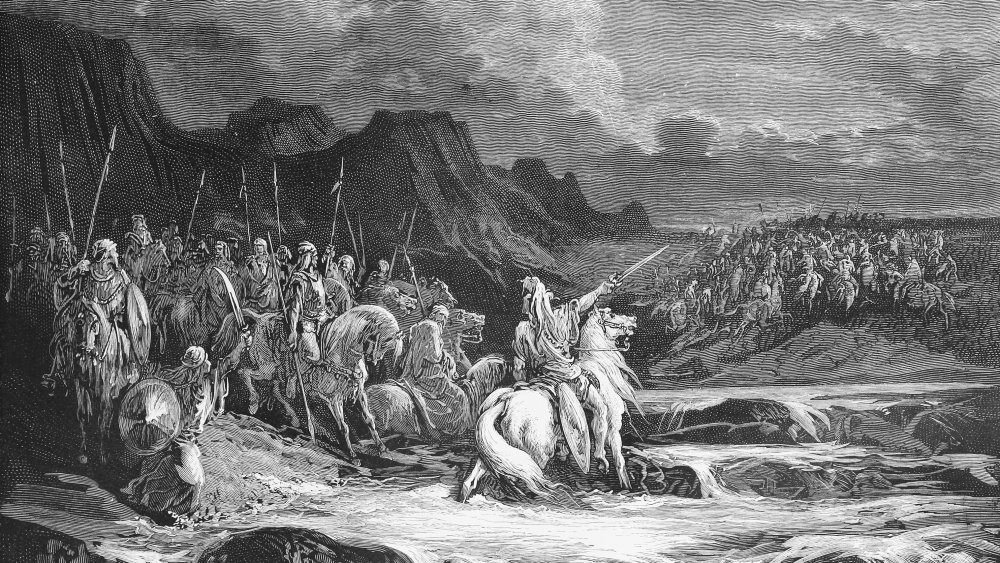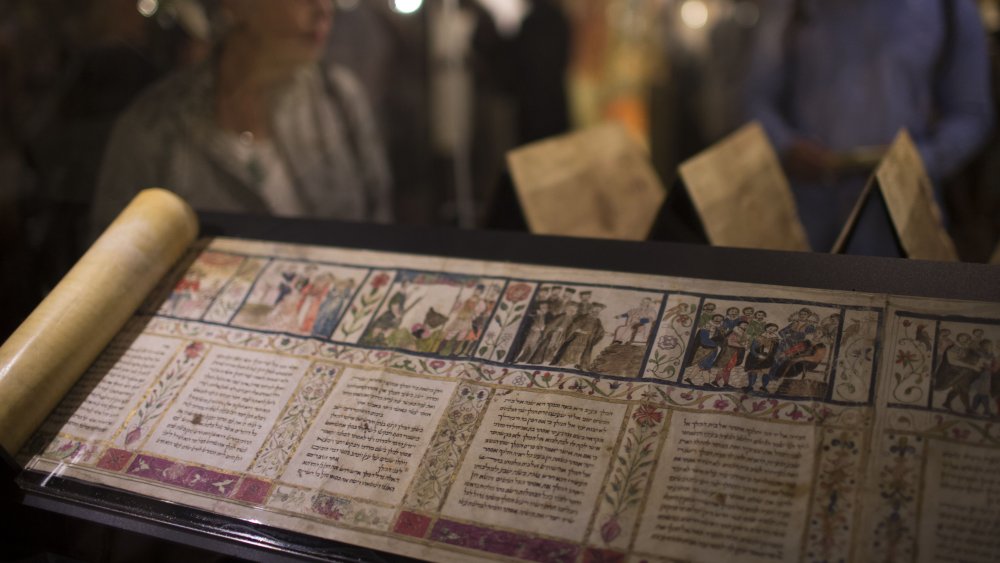Weird Things You Didn't Know About Queen Esther
If you've ever read the Bible and thought, "This is cool, but it could really use some disturbing Game of Thrones action," the story of Queen Esther is for you. Here's an abridged version: when the current queen angers the king, he chucks her and picks a new wife from a selection of hot young women. Esther is the lucky girl, but she hides the fact she's Jewish. When her cousin Mordecai angers Haman—the big bad of the story—Haman decides her's going kill every Jew in revenge. So Esther throws a huge banquet where she reveals she's Jewish and Haman wants her (and her people) dead. The king gets super pissed, the Jews defend themselves against extermination, Haman ends up dead, and we get Purim and triangle-shaped cookies.
Besides Purim, observed by Jews every March, Queen Esther has had a recent surge in popularity (especially in Christian culture), according to Tablet magazine. People love a Jewish peasant girl rising to the rank of queen and eventually saving her entire people.
But Queen Esther's story is more than that. It's a story of her period in history, which means there's occasionally some parts that are really messed up. It's one of the few stories in the Bible to discuss women's place in society. And there's plenty more you don't know about Queen Esther.
Esther's husband, Xerxes I, was a conqueror (and religious revolutionary)
Weirdly for a book about a woman, you have to start with a dude. Esther's husband, King Xerxes, is mostly referred to as the king in the book of Esther, and it takes place largely after his conquering and soldiering days are over.
First let us clarify: Yes, it is the same King Xerxes from 300. He was the guy who tried to conquer Greece and failed. But Encyclopedia Britannica's list of his victories is pretty extensive. He created the concept of Persia after he became the ruler of Babylonia, Egypt, and a bunch of other provinces with their own gods and cultures. But in putting down a revolt in Babylon, a temple of the ancient god Marduk was destroyed. Think of this as like Babylon's official city god and Babylonia's national god. Without being able to interact with the god in the temple (something taken literally in biblical times), it was like King Xerxes would be ruling without the god's permission.
King Xerxes took control of the situation and said there was going to be a new faith. He popularized the Zoroastrianism faith, which is considered the ancient predecessor to a lot of monotheistic faiths that have messiah figures and contend with the balance between good and evil. Yahoo reports this faith is regaining popularity with people in modern Iran.
Queen Vashti has had been portrayed terribly throughout history
Vashti was replaced as queen because she disobeyed King Xerxes. But the context puts things in perspective: King Xerxes (probably hammered) commanded Queen Vashti to come to his feast. He wanted her to parade around so he could show off what a beautiful woman his wife was to his bros. This command came while she was hosting her own dinner.
She refused to come, probably because her husband was being a drunken ass and she didn't want to indulge this (like you do). So of course the king and seven princes said she should be punished. What would happen if all the other royal women started to not do whatever their husbands told them to do when they were hammered? Civilization would crumble, probably.
Tablet points out Vashti doesn't speak in the Bible, so we have no idea of her personality. But Biblical scholars have painted her as everything from a feminist icon standing up to the man to an abuser obsessed with her personal pleasure over her duties as queen. The Torah Sparks blog documents that for a long time, conservative interpreters of the Torah thought Vashti didn't come before the court because she either had a skin disease or ... a tail. As in she was just so base, animalistic, and man-hating that she was closer to an animal than a human.
Esther was really trying not to stand out
It's not every day the king commands every virginal woman to come to the palace to be surveyed so they might be chosen (likely against her will) to be his queen. The women were brought to the king's private rooms at night, shipped back to the harem by morning, and maybe brought back again if the king liked her. Esther was probably feeling what any of us would feel in that situation: Complete fear.
Like most of us at a really bad party, Esther was mostly just trying to get through this so she could go home. But she was stuck at the harem for a whole year before she could officially get out of the arrangement, receiving beauty treatments made from top-of-the-line materials like myrrh. She received a "special diet" from the eunuch tasked with taking care of her and the other girls, which is commonly interpreted to mean she kept kosher. But other than that, Esther didn't seek special treatment.
But Hagai, the main eunuch, took a liking to her. He made sure she had her kosher food and gave her seven female servants straight from the palace. He even coached her on what to bring when she visited the king. And the other girls didn't hate Esther! So at the end of the year, King Xerxes picked Esther to be queen. It probably felt like an obvious choice.
Esther hid her Jewish identity, including her real name
What, Queen Esther wasn't really called by a name meaning "hidden" (according to Chabad) that also may allude to the Babylonian goddess Ishatr? Nooooo.
Queen Esther's birth name was Hadassah, a Hebrew name that means "myrtle." Myrtles are beautiful trees and this name may have alluded to her supernatural beauty. She may have gone by Esther when she officially became queen. But it may have started as early as when she was living in the harem, since she was hiding her Jewish identity from the beginning. This was probably for her own protection, seeing as Haman the Jew-hater was in power and her cousin Mordechai could see the way the wind was blowing. Esther's greatly admired by how much she tried to maintain her Jewish traditions even in secret. The seven servants awarded to her by Hagai may have used to sneakily keep the Sabbath while she was in harem jail. This all set up for a grand reveal of her Jewish heritage after King Xerxes had already become bewitched by her.
These name changes may also be an indicator the story isn't real. Myrtles are a biblical symbol of righteousness, so this may have been a way to designate her as a holy biblical heroine. The name Esther also represents her fully transitioning to being seen as a queen over everyone, not just the Jewish people.
Esther may have (also) been Mordechai's wife
Esther and Mordechai were definitely cousins. There was a big age gap between them, seeing as Mordechai took Esther in after she was orphaned. But according to TheTorah.com, some translations suggest he took her in as his wife, not as his ward. The exact phrase is he "took her to him," which one rabbi in Ask The Rabbi notes is only used when referring to marriage.
Then why would Esther have gone with the other virginal women if she'd been the wife of someone else? It may have been a matter of her age. Mordechai could have married Esther to protect her. The society at hand largely viewed women as the property of men, so marriage meant men wouldn't mess with (or kidnap) Esther because to do so was to offend Mordechai. It's gross, but it's true. This means it's very possible Mordechai never slept with Esther. According to the Jewish Women's Archive, Esther's considered not to have committed adultery because she didn't have a choice in marrying King Xerxes.
But Esther definitely had sex with King Xerxes. Whether it was consensual or not is harder to tell, because any king powerful enough to (legally) kidnap the town's virgin girl population is definitely capable of other evil acts. Some interpretations of the Torah say Esther had a miscarriage upon hearing about the planned genocide against her people.
Esther's palace was in Iran—and it was fabulous
Another thing that sets Esther's story apart is it takes place in Persia. Not in Israel, nor was she a woman living in Ancient Egypt. It's in a super exotic land that wasn't always accessible to the Jews or on their radar. But the Persian empire was enormous in biblical times, reaching from northeast Africa to west India. When Esther enters the picture, the king reigned over 127 provinces.
Her royal palace and kingdom was set what is now considered Iran. Specifically, the city of Susa (today called Shush). The Jerusalem Post reported on archaeological digs in Shush, where people discovered the palace was just as amazing as it's implied in the book of Esther.
This wasn't just some medieval castle. Think of a compound with indoor gardens, giant carved columns, and halls where people could walk and scheme all day long. Esther and her fellow captives (let's call it like it is) were staying in a harem completely separate from the main castle. There was an entire court outside of the king's palace, which shouldn't be confused with the actual royal quarters. Esther becoming queen was a massive step up in the world, but that was probably because her husband was The King You Didn't Mess With.
Haman (the bad guy) represented the Jews' first enemy
Esther's story is full of symbolism, which really helped the case for being accepted into the Bible. Even if Esther didn't exist, which people say about a lot of characters in the Bible, there's enough symbolism that it still serves as a good parable (the Bible's chock full of those). Haman is a great Bible villain. Chabad.org notes he's descended from Amalek, the first enemy to attack the Jews once they came out of slavery of Egypt. He's very one-note in his hatred of the Jews and is clearly on a mission to humiliate and eliminate them whenever possible.
In the book of Esther (in a very Game of Thrones manner), Haman demanded Mordechai bow before him when they encountered each other in public. Haman was a high official, and this was a common custom. Mordechai refused, saying to do so would go against the commandment against worshiping false idols because Haman wore a pagan emblem on his robe. Humiliated, Haman decided to ruin Mordechai's (and the Jews') whole career.
It wasn't even the first time he and Mordechai had butted heads. While travelling together, Haman ran out of food and had to beg Mordechai for some of his. Mordechai said the biblical equivalent of, "Sure, but you have to be my slave." Haman accepted and was trolled by Mordechai for who knows how long.
Queen Esther persuaded the king gradually
It's dramatic to think of Esther dropping to her hands and knees, begging for the fate of the Jewish people. But this was a royal court. She couldn't act too rashly, not after the first queen was kicked out for not doing what a drunk guy ordered.
Esther's method of persuading the king to save the Jews involved a risky first move: Entering the king's court without being summoned. This could have 100 percent gotten Esther killed. But she dared to do it, dressed like a queen and accompanied by two maids. This is the moment when King Xerxes tries to look away from her, but she can't be ignored. She requests he and Haman attend a banquet, and of course he accepts. He's clearly impressed she dared to do such a risky thing and is probably super smitten by now. It's at this banquet Esther reveals Haman's plot to exterminate the Jews and begs for the king's help.
This is definite subtle court intrigue, but it serves the story in one valuable way: It gives the king time to learn about Mordechai. While all this steamy stuff between Esther and the king is happening, Mordechai is foiling a plot to assassinate the king. The king plans to reward him, not knowing he's related to Esther. Once he does, this all cumulates in Haman having a really bad day.
Seriously, Esther was brainwash-people-to-do-anything beautiful
The Bible makes a point of saying whenever someone is attractive. Esther's called "very beautiful" and was said to have a "lovely figure," so you know she's really rocking it. But her beauty may also have had a supernatural bent.
Her Jewish name Hadassah means "myrtle," which some scholars believe may have alluded to a greenish complexion and not a lot of natural beauty. The Megillah (Jewish text about her life that's read at Purim) says Esther may not have had natural beauty, but instead was blessed with grace from God.
Not to be a hater, but Esther's story makes more sense when her beauty is a God-given superpower. The Jewish Encyclopedia states the other girls, instead of being jealous, take care of her because they clearly see the king will choose her. The king tries to look away from her when she visits court to resist her beauty—but God allegedly sends angels to force him to check her out. Later on, he says he will give Esther half the kingdom if she so asked. When Haman is begging Queen Esther for his life after he tried to do the Jews dirty, he falls onto the couch she's lying on. The king walks in, thinks Haman is trying to go after his hot wife, and promptly has Haman impaled on a pole fifty cubits high (about 75 feet). That's beauty as a superpower.
Esther's order let the Jews defend themselves
So yay, Queen Esther's orders kept official people from hurting the Jews. Good stuff! But she had a big kingdom. There was a very real chance official people wouldn't get her orders everything was off before they started attacking Jews.
So her orders had a second part to them that is occasionally overlooked: The Jews were officially allowed to fight back. Encyclopaedia Britannica describes it as the ultimate Stand Your Ground law: If someone came to mess up a Jew's house or business, the Jew had the right to chase them off (with a sword, slingshot, or anything else they had). This would help avoid violence brought on by the lack of communication. But it would serve as a deterrent against antisemitic people who heard the first law and thought it was still open season on Jews. In short, no one could plead ignorance. The governors over the provinces ruled by King Xerxes were okay with this—Mordechai had taken over Haman's position, and they liked this Jewish guy way better than the last jerk.
The day freedom was conferred upon the Jews was commemorated by feasting and rest. Today, this is continued with the Jewish holiday Purim. But even that story is more complicated than it seems.
Purim may have been celebrated before Esther's time
Esther's story may not be true and may just be a bunch of metaphors. But it may have also been added to the holiday of Purim because... well, no one knows why folks celebrate Purim. The Jewish Encyclopedia posits it's completely logical the Jews integrated a Babylonian holiday over time. Esther's name is close to that of the Babylonian goddess Ishtar, and Haman is close to the chief god Humman.
The holiday didn't include religious elements initially. The reading of Esther's story in temple was added over time. Some Jews maintain the tradition of dressing up Halloween-style on Purim. Chabad explains wearing costumes during Purim may pay tribute to Jews secretly practicing their religion in times of persecution. It may have also have been a way to lend dignity to poor people who were looking for help on Purim. When everyone's receiving gifts, no one's embarrassed.
But Jews embraced the addition of Esther to the celebration of Purim. A fair amount of Purim traditions are designed specifically around Haman, including the delicious Hamantaschen cookies (or sometimes pastries). The Nosher explains these three-pointed snacks are designed to mimic Haman's hat or cut-off ears. There's also a tradition of whistling or rattling noisemakers whenever Haman's name is mentioned, because that guy is destined to be trolled by Jews into the afterlife.
Queen Esther's story was almost cut from the Bible
Esther's story is infamous for never directly mentioning God. A lot of Sunday school pastors write this off, saying God doesn't have to be mentioned for evidence to show religious forces are at work in Esther's life. It's about the life of a woman, though that's also covered in the book of Ruth. And you don't need to go further than Song of Songs for sexy times and intrigue in the Bible.
But the lack of mentioning God was actually a big problem when it came to getting Esther into the Bible at all. Tablet reports the book of Esther is so weird that religious icon Martin Luther didn't want it in the Bible at all. He actually said about it, "I am so great an enemy to ... Esther, that I wish [it] had not come to us at all, for [it has] too many heathen unnaturalities." But Martin Luther probably thought this because he was basically Captain Antisemitic. He ended up including it in his version, thankfully.
Today, Esther's book contains six chapters that are considered apocryphal, which means it's not fully canonical to the Bible. The Encyclopedia Britannica states Esther's story is one of the five Megillot, the scrolls read on Jewish holy days. So even if it's not strictly canon, it's still really important.
